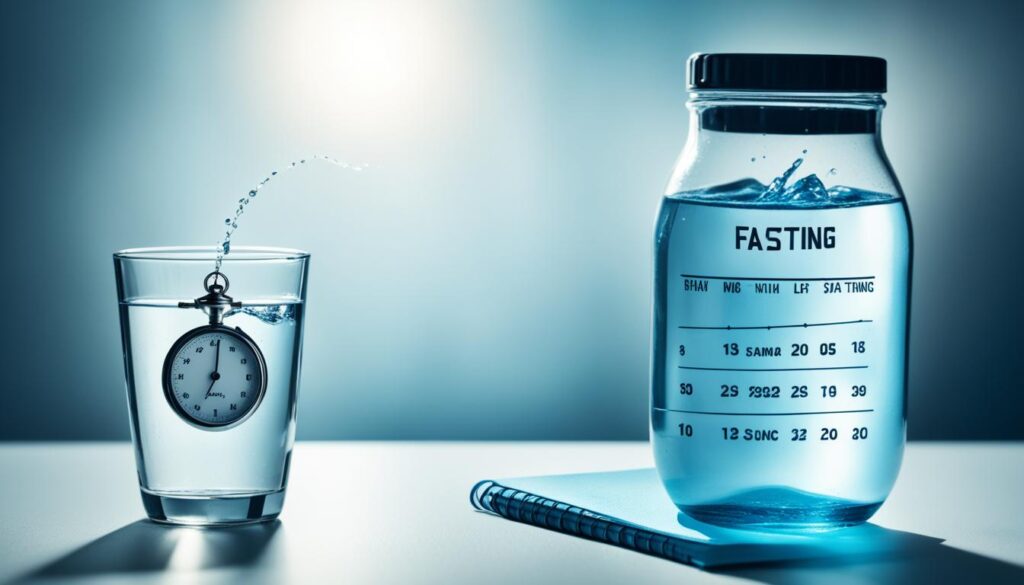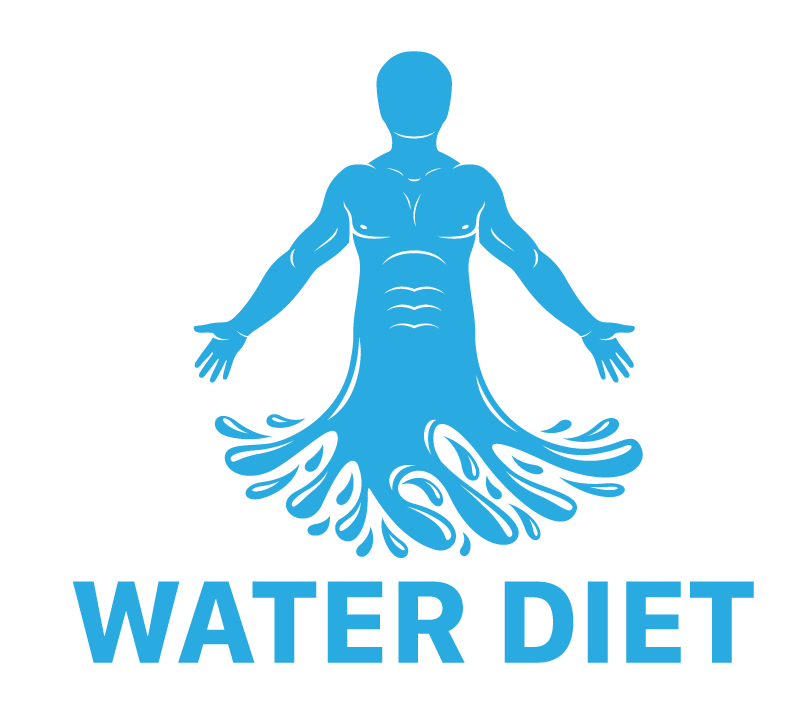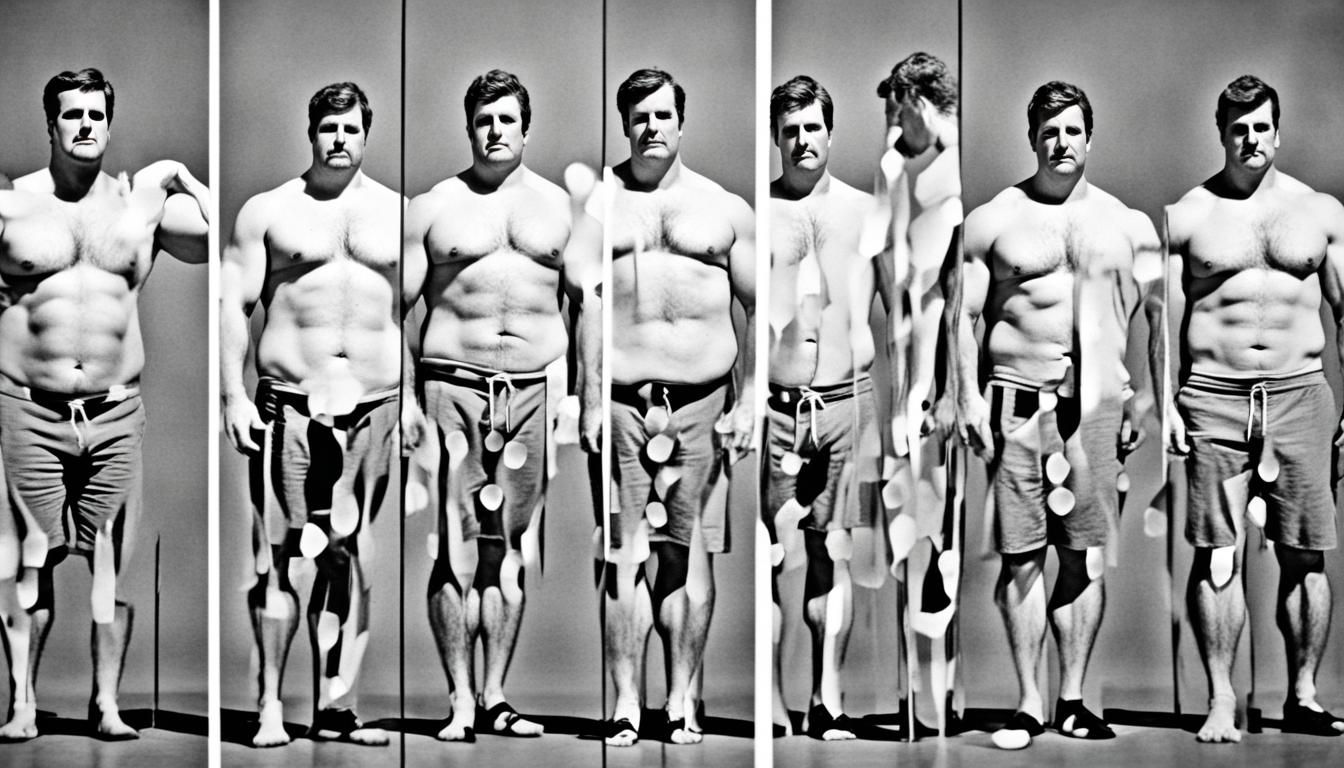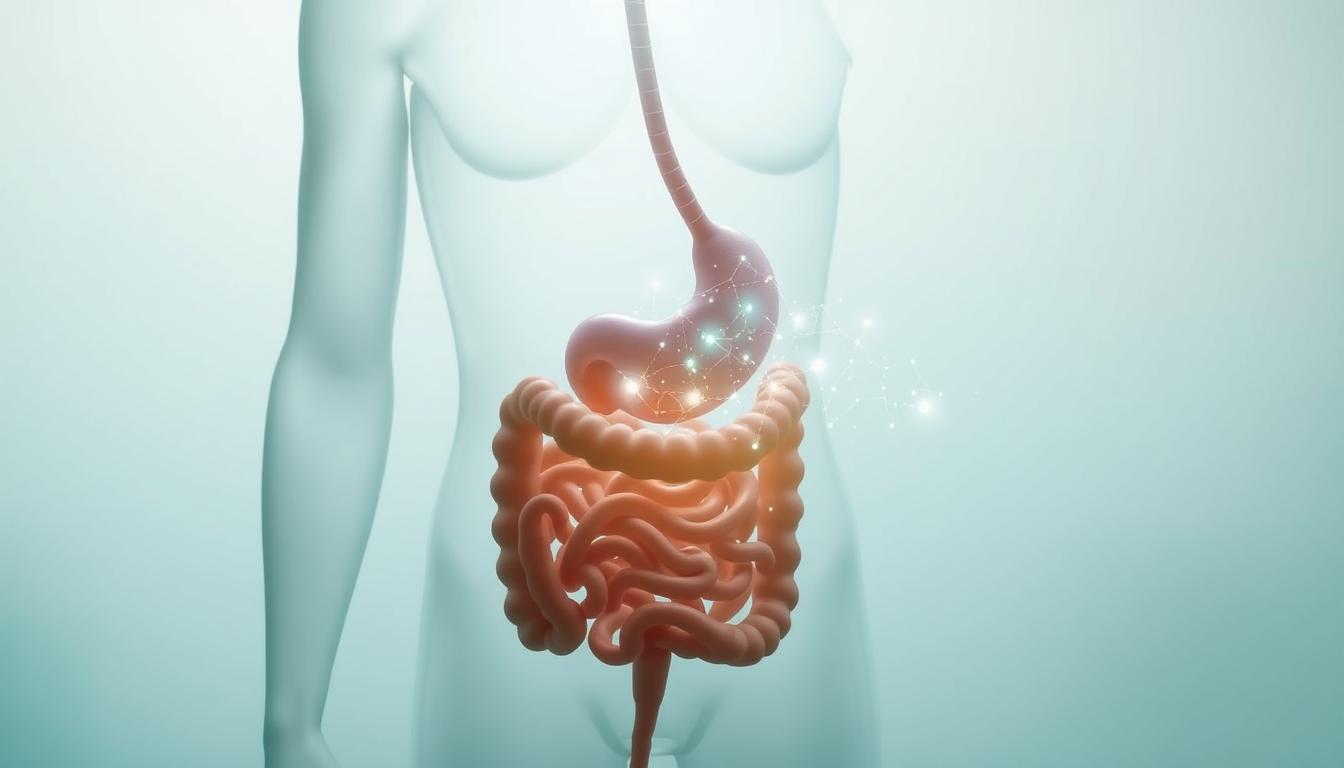Water fasting is changing the dieting world, offering fast weight loss results. It’s not just a passing trend. This practice has a long history, from strict religious fasts to a modern health strategy. People looking to manage their weight are now talking about water fasting. They’re curious about how well it works and if it’s safe.
Key Takeaways
- Water fasting may offer health benefits beyond weight loss, including improved insulin sensitivity and metabolic health.
- It is imperative to understand the risks and to approach water fasting with an informed and cautious strategy.
- Water fasting requires abstaining from all foods, focusing solely on water consumption for defined periods.
- Seeking professional medical advice before committing to a water fasting regimen is essential.
- Understanding the differences between various fasting methods can help individuals choose the most sustainable approach.
- After completing a water fast, reintroduction to food must be gradual to reduce risk of refeeding syndrome.
Understanding Water Fasting and Its Popularity in Weight Management
Water fasting is a big topic in health today. It’s a method with deep roots and growing fame for weight loss benefits. It combines tradition and modern health needs. Before we dive into water fasting for weight loss, we must understand its evolution. From ancient rituals to today’s lifestyle choice, water fasting has a long history.
Historical Significance and Modern-Day Wellness Applications
Water fasting has evolved impressively over time. It started as a spiritual discipline and became a popular health strategy. Many love it for its weight loss and health benefits. It’s said to cleanse the body and help reset bodily functions.
Defining Water Fasting and Its Variations
Water fasting means not eating any food and only drinking water. It can last from 24 to 72 hours. Yet, modern methods like the 16/8 technique offer more flexibility. This makes water fasting more accessible for those looking to lose weight.
| Type of Water Fasting | Duration | Primary Benefit |
|---|---|---|
| Short-Term Fast | 24 hours | Mild detoxication and body reset |
| Extended Fast | 48-72 hours | Deeper metabolic impact and possible weight loss |
| Intermittent Fasting (16/8 method) | 16 hours fasting, 8 hours eating | Improved insulin sensitivity, daily practice |
People try water fasting to lose weight, but it’s vital to be careful. Talk to a doctor before you start. Stay hydrated and don’t overdo physical activity while fasting.
Who Should Refrain From Water Fasting?
Water fasting may seem appealing for losing weight. But, it’s crucial to know it’s not safe for everyone because of the risks of water fasting for weight loss. Learning about these risks and the best practices for water fasting weight loss is essential for a safe practice.
Specific Vulnerable Groups and Pre-existing Conditions
Some people should be extra careful. Kids, teens, and older adults could be harmed by water fasting. Also, those with gout, type 1 diabetes, or an eating disorder history face big risks of water fasting for weight loss. They’re often told to find other ways to control their weight.
| Group | Risks | Recommendations |
|---|---|---|
| Children & Teenagers | Disrupted growth, nutritional deficiencies | Consult a pediatrician before any fasting regimen |
| The Elderly | Increased frailty, accelerated muscle loss | Medical supervision and nutrient-rich diet required |
| Individuals with Gout or Type 1 Diabetes | Blood sugar instability, potential for serious complications | Explore weight management under healthcare guidance |
| Pregnant or Breastfeeding Women | Nutrient insufficiency for mother and child | Avoid fasting and maintain balanced nutrition |
Importance of Consulting Healthcare Professionals Before Starting
Because of the risks of water fasting for weight loss, consulting a healthcare professional first is critical. They help tailor a fasting plan that fits your health history and conditions. This step is one of the best practices for water fasting weight loss, ensuring it’s safe and effective.
Starting water fasting without expert advice can be dangerous. It can cause nutrient shortfalls or worsen health problems. Health experts can guide you on fasting safely or offer better options for your health aims and needs.

If you’re considering water fasting to lose weight, talk to a doctor first. This step is crucial, especially for those at higher risk or with health issues. By discussing the risks of water fasting for weight loss and following best practices for water fasting weight loss, you can approach your health goals in a mindful and secure way.
Water Fasting Schedule for Weight Loss: Common Approaches and Best Practices
Crafting the right water fasting schedule for weight loss is essential. You can choose from short daily fasts to longer fasts lasting up to 72 hours. This guide highlights various fasting methods and tips for losing weight during the water fasting period effectively.

- Intermittent fasting 16/8: Fast for 16 hours and eat during an 8-hour period. It’s a solid routine for regular water fasting.
- 24-hour water fast: Fast for a whole day, once or twice a week. Only drink water to aid weight loss and cleanse the body.
- Extended water fast (48-72 hours): Do these less often and preferably with a doctor’s guidance for safety and health.
It’s key to stay hydrated and eat well when not fasting. Slowly adding foods back after fasting is also important. It helps avoid health issues and keeps fasting benefits.
| Post-Fast Day | Food/Drink | Notes |
|---|---|---|
| Day 1 | Broth, juice, soft fruits | Begin with liquids and soft foods to help your digestion. |
| Day 2 | Steamed vegetables, soups | Add cooked, nutrient-rich foods into your diet. |
| Day 3 | Protein-rich foods, whole grains | Include normal diet foods with proteins for body recovery. |
When making a water fasting schedule for weight loss, pay attention to what your body needs. Start with shorter fasts and then try longer ones. Keeping health in mind while following these suggestions can lead to effective weight loss during the water fasting period.
Breaking a Water Fast: Post-Fast Nutrition and Reintroduction of Foods
Ending a water fast means carefully picking what you eat next. This phase is vital to keep the fast’s benefits and avoid health issues. For weight loss through water fasting, focus on adding nutrition-rich foods slowly.
Nutrient-Dense Foods for Optimum Recovery
After a water fast, your body needs lots of vitamins and minerals to bounce back. Start with small, nutrient-packed meals to rebuild without straining the digestive system. Try stewed fruits, cooked veggies, and broths at first.
Later, you can add foods like nuts, legumes, and lean proteins, including fish or plant-based options. This helps keep muscle and health up, maintaining the weight lost from fasting. Balancing big and small nutrients is crucial here.
Steps to Avoid Refeeding Syndrome and Gradual Meal Increases
Refeeding syndrome is a serious risk due to rapid electrolyte changes from eating too soon after fasting. To avoid this, eat small amounts at first, then slowly go back to regular meals. Those who back water fasting say to keep drinking lots of water even after the fast.
Unlike other diets, reintroducing food after water fasting takes careful steps. This makes it different from just cutting calories or eating within set times, which tend to resume normal eating quicker.
Following these steps helps shift smoothly back to regular eating and keeps the fasting benefits. Water fasting, compared to other methods, needs careful post-fast handling for lasting success and health. Always talk to a doctor before starting or ending any diet plan.




